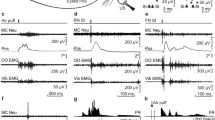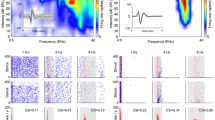Abstract
Previous communications from the Epilepsy Center of the University of Wisconsin described the conditioning of certain types of sensory-induced epilepsy. These included stroboscopic-induced seizures, startle epilepsy and musicogenic epilepsy. The present communication adds two types of sensory-evoked seizures treated by conditioning techniques. These additional types are the dysrhythmias induced by pattern presentation and by eye closure. The techniques employed are similar in their main concept to those previously reported. The presentation of a noxious stimulus is altered in such a way as to be innocuous, then is presented repeatedly without producing a seizure. Next, the stimulus is altered gradually until the noxious state is reached.
Although these techniques are of value in the treatment of refractory cases of sensory-evoked epilepsy, their major importance is the demonstration that it is possible by the use of behavioral techniques to alter the electroencephalogram and the neurophysiological-neurochemical state which is epilepsy.
Similar content being viewed by others

References
Ansell, S. D., and Smith, K. U.: Application of a Real-time Computer System to the Clinical Treatment of Photosensitive Epilepsy. Presented at the Annual Conference of Engineering and Medicine and Biology, 1966.
Booker, H. E., Forster, F. M. and Klove, H.: Extinction factors in startle (acousticomotor) seizures.Neurology,15: 1095–1103, 1965.
Forster, F. M., Booker, H. E., and Ansell, S.: Computer automation of the conditioning therapy of stroboscopic-induced seizures.Trans. Am. Neurol. Assn., 1966.
Forster, F. M., Booker, H. E., and Gascon, G.: Conditioning in musicogenic epilepsy.Trans. Am. Neurol. Assn., 1967.
Forster, F. M., and Campos, G. B.: Conditioning factors in stroboscopic-induced seizures.Epilepsia,5:156–165, 1964.
Forster, F. M., Klove, H., Peterson, W. G., and Bengzon, A. R. A.: Modification of musicogenic epilepsy by extinction technique.8th Internat. Cong. Neurol., Vienna, 1965.
Forster, F. M., Klove, H., Peterson, W. G., and Bengzon, A. R. A.: Modification of musicogenic epilepsy by extinction technique.Trans. Am. Neurol. Assn., 1965.
Forster, F. M., Ptacek, L. J., Peterson, W. G., Chun, R. W. M., Bengzon, A. R. A., and Campos, G. B.: Stroboscopic-induced seizure discharges.Arch. Neurol. 11:603–608, 1964.
Forster, F. M., Ptacek, L. J., and Peterson, W. G.: Auditory clicks in extinction of stroboscope-induced seizures.Epilepsia,6:217–225, 1965.
Author information
Authors and Affiliations
Additional information
Supported by Public Health Service Grant B 03360 from the National Institute of Neurological Diseases and Blindness.
Rights and permissions
About this article
Cite this article
Forster, F.M. Conditioning of cerebral dysrhythmia induced by Pattern Presentation and Eye Closure. Conditional Reflex 2, 236–244 (1967). https://doi.org/10.1007/BF03034136
Issue Date:
DOI: https://doi.org/10.1007/BF03034136



